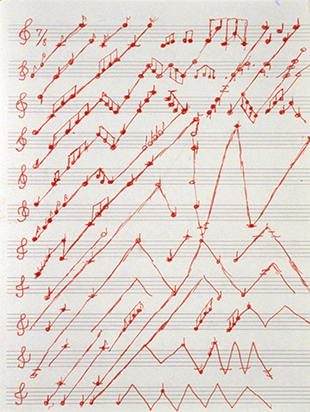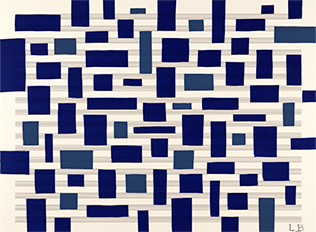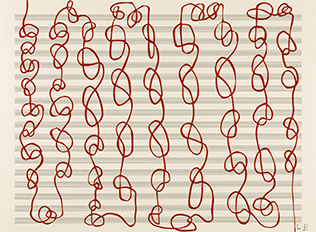





Music

Untitled
2002

Untitled, no. 20 of 24, from the illustrated book, Hours of the Day
2006
Children’s songs, piano lessons, and records were intimate memories of growing up for Louise Bourgeois. In a diary entry from 1950 she listed old family recordings she came across in the attic—mostly operas, but also popular French songs of the day. Later, in old age, music was a comfort. Listening to it at night calmed her during bouts of insomnia, and she found humming or singing songs from the past to be soothing.
For Bourgeois, musical rhythms provided reliability, something she deeply appreciated but found elusive in herself. She relished her metronome and kept it close by on her work desk, among her pens, pencils, brushes, and paper. The voluminous notes she wrote in diaries and on the backs of drawings often contain words that read like free-associative lyrics: “…rain, water can, water tap, kettle, moss, splash, waddle, puddle, mud pies, muddle, drip, leak, pump, dry well….” Other handwritten lists hint at her musical tastes: “Mozart, La Flute enchantée, Buddy Holly, Houston Texas yodels, Rolling Stones, Chuck Berry, Hardbreak Hotel, I Get So Lonely I Could Die.”
Printed music paper became a major element in Bourgeois’s work in the mid-1990s, with a series called The Insomnia Drawings. The horizontal staves provided a visual rhythm and also a foil against which to react. They form the backdrop for her Fugue portfolio of 2002–05, where squares, circles, lines, and spirals suggest reverberating sounds. Also during these late years, Bourgeois issued two CDs capturing her own brand of singing and inventive lyrics.

Untitled
2002

Untitled, no. 20 of 24, from the illustrated book, Hours of the Day
2006
“For the night drawings, it is very peaceful to look at the lines of the staff paper. It gives a rhythm…a passive direction to the horizontal…and an active direction to the vertical….”